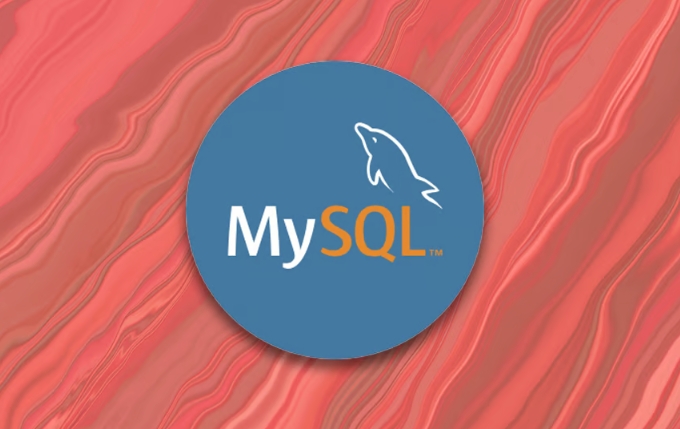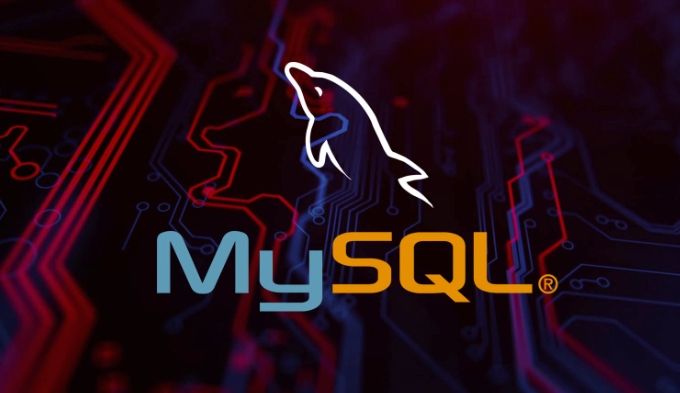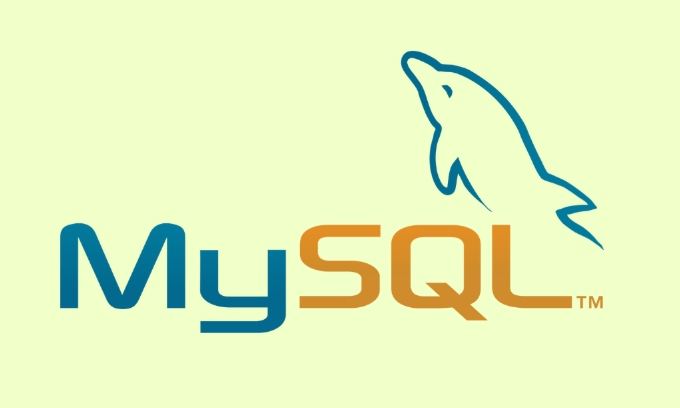Establishing secure remote connections to a MySQL server
Jul 04, 2025 am 01:44 AMTo securely connect to a remote MySQL server, use SSH tunneling, configure MySQL for remote access, set firewall rules, and consider SSL encryption. First, establish an SSH tunnel with ssh -L 3307:localhost:3306 user@remote-server -N and connect via mysql -h 127.0.0.1 -P 3307. Second, edit MySQL’s config file to change bind-address to the server’s public IP or 0.0.0.0, then restart MySQL. Third, grant remote access using GRANT ALL PRIVILEGES ON database.* TO 'user'@'your-local-ip', and restrict access via firewall tools like UFW with sudo ufw allow from your-local-ip to any port 3306. Fourth, if not using SSH, enable SSL in MySQL by configuring valid certificates and enforcing SSL for remote users.

Connecting to a MySQL server securely from a remote location is a common need, especially when managing databases for web apps or cloud services. The key isn't just about making the connection work — it's making sure it works safely without exposing your data or system to unnecessary risks.

Here are some practical steps and considerations to help you set up secure remote access to a MySQL server.

Use SSH Tunneling for Secure Access
One of the most reliable ways to connect remotely to MySQL is through an SSH tunnel. This method encrypts all communication between your local machine and the MySQL server, even if the database protocol itself isn’t encrypted.
To set this up:

- Make sure SSH access is enabled on the server where MySQL is running.
- Forward a local port through SSH to the MySQL server’s port (usually 3306).
- Configure your MySQL client to connect to
127.0.0.1on the forwarded port.
For example, this command forwards port 3306 on the remote server to port 3307 locally:
ssh -L 3307:localhost:3306 user@remote-server -N
Then, connect using:
mysql -h 127.0.0.1 -P 3307 -u your_user -p
This way, the actual database credentials and queries travel through an encrypted tunnel, reducing the risk of interception.
Configure MySQL to Allow Remote Connections
By default, MySQL binds only to localhost. To allow remote access, you'll need to adjust the configuration.
- Open the MySQL config file (
/etc/mysql/my.cnfor/etc/my.cnf) and look for thebind-addressline. - Change it from
127.0.0.1to the server's public IP or0.0.0.0(which allows connections from any IP). - Restart MySQL after saving changes.
Also, make sure that:
- The user account you're connecting with has privileges for remote hosts — not just
localhost. - You're not allowing overly broad access like
'user'@'%'unless absolutely necessary.
You can grant access specifically to the IP address you're connecting from:
GRANT ALL PRIVILEGES ON database.* TO 'user'@'your-local-ip' IDENTIFIED BY 'password'; FLUSH PRIVILEGES;
This adds a layer of control by limiting which IPs can connect.
Secure the Server with Firewall Rules
Even if you’ve configured MySQL properly, leaving port 3306 open to the public internet is risky. Firewalls help limit who can reach that port in the first place.
On the server side:
- Use tools like
ufworiptablesto restrict access to MySQL's port. - Only allow traffic from specific IPs or ranges.
For example, using UFW:
sudo ufw allow from your-local-ip to any port 3306
If you're not using direct remote access and prefer SSH tunneling instead, just block port 3306 entirely — it doesn’t need to be open at all in that case.
Also, avoid having MySQL listen on a public interface unless you have strong reasons and proper protections in place.
Consider SSL for Direct Remote Connections
If you're connecting directly over the network (not using SSH), enabling SSL for MySQL connections is a must.
- Generate or obtain valid SSL certificates for your MySQL server.
- Configure MySQL to require SSL for remote users.
- Test the connection using a client that supports SSL.
This ensures that even if someone intercepts the traffic, they won’t be able to read the contents easily.
However, setting up SSL correctly can be complex. If you're not familiar with certificate signing and encryption settings, start small and test thoroughly before relying on it in production.
Setting up a secure remote connection to MySQL doesn't have to be complicated, but it does require attention to detail. Whether you go with SSH tunnels, firewall restrictions, or SSL encryption, each step plays a role in keeping your data safe.
And remember — the fewer people who can access your database directly, the better. Keep permissions tight, monitor logs regularly, and always assume someone is trying to get in the back door.
The above is the detailed content of Establishing secure remote connections to a MySQL server. For more information, please follow other related articles on the PHP Chinese website!

Hot AI Tools

Undress AI Tool
Undress images for free

Undresser.AI Undress
AI-powered app for creating realistic nude photos

AI Clothes Remover
Online AI tool for removing clothes from photos.

Clothoff.io
AI clothes remover

Video Face Swap
Swap faces in any video effortlessly with our completely free AI face swap tool!

Hot Article

Hot Tools

Notepad++7.3.1
Easy-to-use and free code editor

SublimeText3 Chinese version
Chinese version, very easy to use

Zend Studio 13.0.1
Powerful PHP integrated development environment

Dreamweaver CS6
Visual web development tools

SublimeText3 Mac version
God-level code editing software (SublimeText3)

Hot Topics
 What is a typical process for MySQL master failover?
Jun 19, 2025 am 01:06 AM
What is a typical process for MySQL master failover?
Jun 19, 2025 am 01:06 AM
MySQL main library failover mainly includes four steps. 1. Fault detection: Regularly check the main library process, connection status and simple query to determine whether it is downtime, set up a retry mechanism to avoid misjudgment, and can use tools such as MHA, Orchestrator or Keepalived to assist in detection; 2. Select the new main library: select the most suitable slave library to replace it according to the data synchronization progress (Seconds_Behind_Master), binlog data integrity, network delay and load conditions, and perform data compensation or manual intervention if necessary; 3. Switch topology: Point other slave libraries to the new master library, execute RESETMASTER or enable GTID, update the VIP, DNS or proxy configuration to
 How to connect to a MySQL database using the command line?
Jun 19, 2025 am 01:05 AM
How to connect to a MySQL database using the command line?
Jun 19, 2025 am 01:05 AM
The steps to connect to the MySQL database are as follows: 1. Use the basic command format mysql-u username-p-h host address to connect, enter the username and password to log in; 2. If you need to directly enter the specified database, you can add the database name after the command, such as mysql-uroot-pmyproject; 3. If the port is not the default 3306, you need to add the -P parameter to specify the port number, such as mysql-uroot-p-h192.168.1.100-P3307; In addition, if you encounter a password error, you can re-enter it. If the connection fails, check the network, firewall or permission settings. If the client is missing, you can install mysql-client on Linux through the package manager. Master these commands
 Why do indexes improve MySQL query speed?
Jun 19, 2025 am 01:05 AM
Why do indexes improve MySQL query speed?
Jun 19, 2025 am 01:05 AM
IndexesinMySQLimprovequeryspeedbyenablingfasterdataretrieval.1.Theyreducedatascanned,allowingMySQLtoquicklylocaterelevantrowsinWHEREorORDERBYclauses,especiallyimportantforlargeorfrequentlyqueriedtables.2.Theyspeedupjoinsandsorting,makingJOINoperation
 What are the transaction isolation levels in MySQL, and which is the default?
Jun 23, 2025 pm 03:05 PM
What are the transaction isolation levels in MySQL, and which is the default?
Jun 23, 2025 pm 03:05 PM
MySQL's default transaction isolation level is RepeatableRead, which prevents dirty reads and non-repeatable reads through MVCC and gap locks, and avoids phantom reading in most cases; other major levels include read uncommitted (ReadUncommitted), allowing dirty reads but the fastest performance, 1. Read Committed (ReadCommitted) ensures that the submitted data is read but may encounter non-repeatable reads and phantom readings, 2. RepeatableRead default level ensures that multiple reads within the transaction are consistent, 3. Serialization (Serializable) the highest level, prevents other transactions from modifying data through locks, ensuring data integrity but sacrificing performance;
 How to safely purge old MySQL binlog files?
Jun 19, 2025 am 01:01 AM
How to safely purge old MySQL binlog files?
Jun 19, 2025 am 01:01 AM
To clean MySQL binlog files, you should use the PURGEBINARYLOGS command or set the automatic expiration time, and files cannot be deleted directly. 1. Use the PURGE command to clean old logs by file name or time. Before execution, you need to confirm that the slave library no longer uses the relevant logs; 2. Check the current log status and slave library location through SHOWMASTERSTATUS and SHOWSLAVESTATUS to ensure the security of the cleaning range; 3. It is recommended to set the binlog_expire_logs_seconds parameter to achieve automatic cleaning, which is suitable for long-term operation environments; 4. Deleting files directly will cause serious problems such as master-slave synchronization failure and inconsistent log information, and must be avoided.
 How to add the MySQL bin directory to the system PATH
Jul 01, 2025 am 01:39 AM
How to add the MySQL bin directory to the system PATH
Jul 01, 2025 am 01:39 AM
To add MySQL's bin directory to the system PATH, it needs to be configured according to the different operating systems. 1. Windows system: Find the bin folder in the MySQL installation directory (the default path is usually C:\ProgramFiles\MySQL\MySQLServerX.X\bin), right-click "This Computer" → "Properties" → "Advanced System Settings" → "Environment Variables", select Path in "System Variables" and edit it, add the MySQLbin path, save it and restart the command prompt and enter mysql--version verification; 2.macOS and Linux systems: Bash users edit ~/.bashrc or ~/.bash_
 How to install MySQL on Windows 11
Jun 29, 2025 am 01:47 AM
How to install MySQL on Windows 11
Jun 29, 2025 am 01:47 AM
The key steps for installing MySQL on Windows 11 are as follows: 1. Download the correct version, select the Windows MSI installation package and ensure that the system is 64-bit; 2. Select the "Custom" mode during installation, add MySQLServer and set the appropriate installation path; 3. Run the configuration wizard, select the "ServerComputer" configuration type, set the root password, and select the automatic startup method; 4. After the test installation is successful, if the prompt command is unavailable, add the MySQL bin directory to the system PATH environment variable. Follow these steps to complete the installation and configuration smoothly.
 Resetting the root password for MySQL server
Jul 03, 2025 am 02:32 AM
Resetting the root password for MySQL server
Jul 03, 2025 am 02:32 AM
To reset the root password of MySQL, please follow the following steps: 1. Stop the MySQL server, use sudosystemctlstopmysql or sudosystemctlstopmysqld; 2. Start MySQL in --skip-grant-tables mode, execute sudomysqld-skip-grant-tables&; 3. Log in to MySQL and execute the corresponding SQL command to modify the password according to the version, such as FLUSHPRIVILEGES;ALTERUSER'root'@'localhost'IDENTIFIEDBY'your_new






